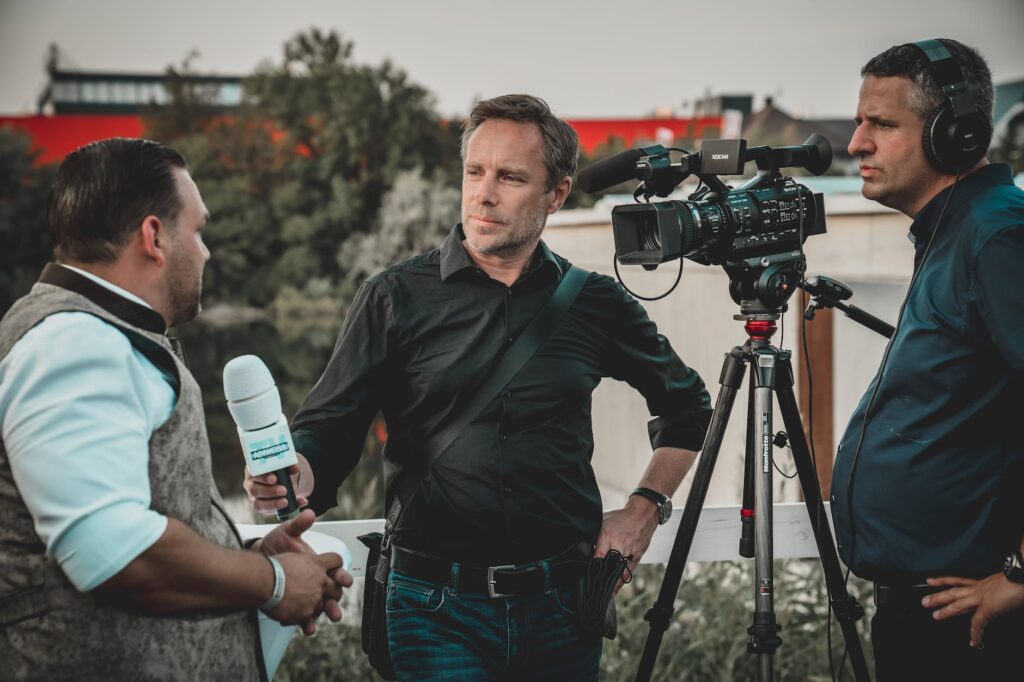Years ago, in a private Facebook messenger conversation, my pal Stacey told me that she used to combat the stress of college by watching videos of puppies on YouTube.
This has always stuck with me. I think it’s brilliant. She put some good content into a bad day. When school or work stressed me, I would work even harder. Taking a break rarely entered my mind. I was brought up to believe that I was the problem if work was getting to me. I wasn’t tough enough or trying hard enough.
Our generation was taught that if we worked hard and stayed in our career, it would eventually pay off. It can, but working for The Man isn’t that way for most people. When I was getting into broadcasting – forgive me – but I actually felt sorry for my classmates who took factory jobs. They’re now retired with fat pensions. Sure, in some cases they hated their work while I had a lot more fun. But I can see the wisdom of their decisions and the foolishness and arrogance of my perspective.
Our Collective Trauma Experiences
Being a journalist forces a person to simmer in bad news. It’s one of the reasons they develop gallows humour. It’s not that they don’t understand the gravity of the stories they are covering. They understand it too well. They’ve vicariously experienced the worst of humanity over and over again. While consumers of news can turn away whenever it becomes too much, journalists don’t have that luxury. Reporters are traumatized by visiting the scenes of terrible incidents. One of my colleagues who covered the Paul Bernardo trial needed counselling afterwards. It wasn’t until the book Invisible Darkness came out that I truly understood why. The facts of the case kept under a publication ban were beyond horrendous. And journalists had to live with knowing them.
On my “to read” list is a book by former Toronto crime reporter, Tamara Cherry. The Trauma Beat: A Case for Re-Thinking the Business of Bad News looks at the effect of trauma on journalists but also on families of victims. How do they possibly handle their grief while also getting a microphone shoved in their faces? And what about the family whose story doesn’t get told at all when, perhaps, it should have been? It’s a big subject but the book is getting great reviews.
What kind of news do we want?
So many have tried to make a “good news” source but not many make it. Yet, you can find it if you look hard enough. And a new study shows stories about kindness can counteract the negative effects of reading bad news. Researchers think one reason is because kindness is something we can all agree on. Nobody watched the recent video of a homeless man who stopped a runaway baby stroller heading for a busy California highway and thought, “What a jerk!” These stories unite us in a time when so many others seek to divide us.
The study shows that consuming good news makes people want to do something good. Like making a donation to a charity. We can’t subsist on a steady diet of only good news, though. It’s not realistic. But maybe we can push for more of a balance. If 24/7 news organizations can fill time with “what if” questions from talking heads and try to pass them off as news, maybe they can try a little harder to find good things that are actually happening. The news, and the outrage, lead people to believe the world is a worse place than it actually is. Maybe we could all try just a little harder to make it appear better.


In my work as a journalist, I’ve tried to highlight “positive stories.” And let me tell you, readers sure do appreciate it. Especially during COVID, there was a demand for articles that weren’t the standard doom and gloom, so I agree with you on getting balance in your news diet.
Insightful and inspiring, this is a terrific blog. I can’t wait to talk about it – maybe next week – maybe later. And to hear more about Tamara Cherry’s book. You have a beautiful mind, which perfectly matches your heart. xo E.